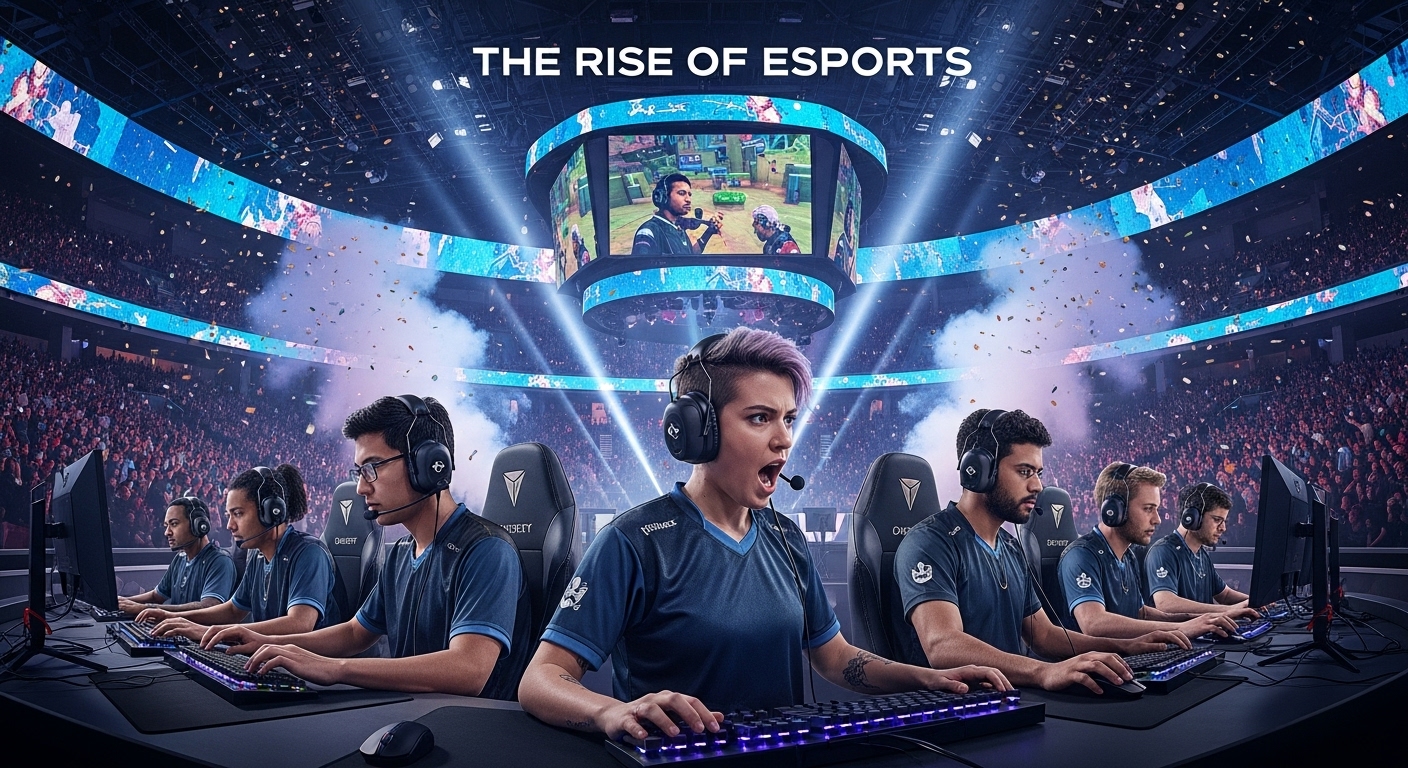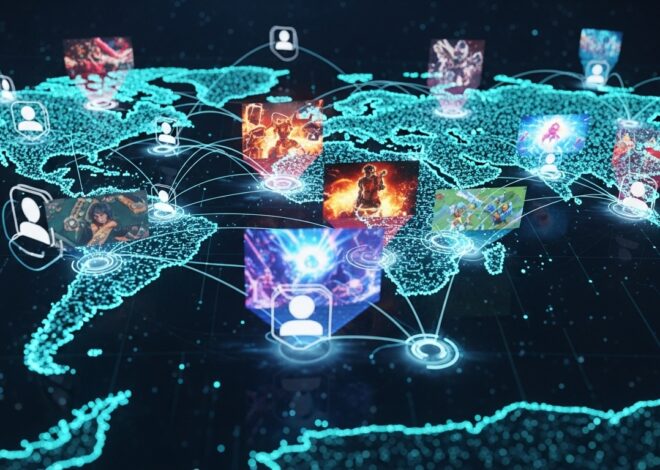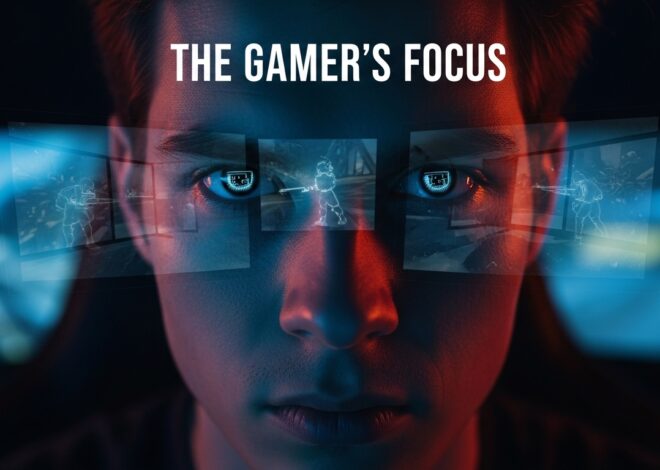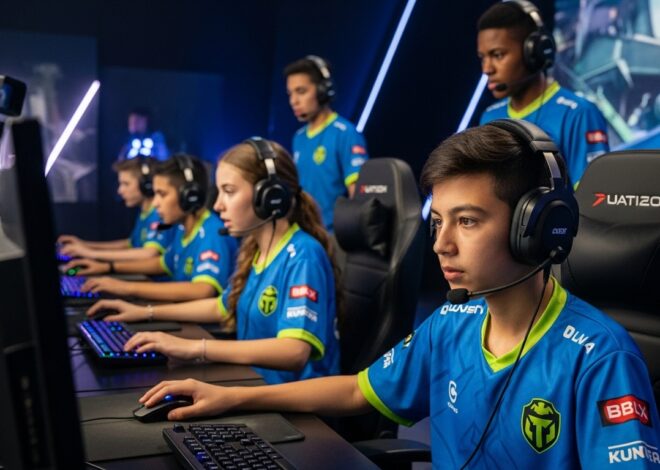
The Evolution and Impact of Esports: From Niche Hobby to Global Phenomenon
Introduction
Over the past two decades, Esports has transformed from a small community of dedicated gamers into a global entertainment industry worth billions of dollars. Once considered just a pastime for hobbyists, competitive gaming now fills massive arenas, attracts millions of online viewers, and rewards professional players with prize pools rivaling those of traditional sports. The growth of Esports has not only redefined the idea of competition but has also reshaped the landscape of media, technology, and global culture.
This article delves deep into the world of Esports—its history, development, cultural significance, economic power, and what the future holds for this fascinating digital revolution.
The Origins of Esports
The roots of Esports can be traced back to the early days of video gaming in the 1970s and 1980s. While the term “Esports” itself wasn’t widely used then, competitive gaming already existed in small, enthusiastic circles.
In 1972, at Stanford University, students participated in what is often considered the first recorded video game competition—a tournament for the game Spacewar!. The prize was symbolic rather than lucrative: a year’s subscription to Rolling Stone magazine. However, this event planted the seeds of what would one day become a multibillion-dollar industry.
By the early 1980s, arcade gaming had exploded in popularity, and competition among top players began to draw public attention. Games like Pac-Man, Donkey Kong, and Space Invaders inspired local and national contests. In 1980, Atari organized the Space Invaders Championship, attracting over 10,000 participants across the United States—a monumental moment that showcased the potential for organized gaming competition.
The Rise of Multiplayer and Online Gaming
The 1990s were pivotal for the development of Esports, largely due to advances in technology that allowed for multiplayer gaming and local area network (LAN) play. Games such as Doom, Quake, and StarCraft made head-to-head competition possible in ways never seen before. Players could connect through LAN parties or early internet connections to test their skills against others around the world.
This decade also saw the birth of professional gaming organizations and structured tournaments. South Korea, in particular, became a global leader in fostering Esports culture. Following the Asian financial crisis in 1997, the South Korean government heavily invested in internet infrastructure, resulting in widespread broadband access. With this came the rise of “PC bangs”—gaming cafés where young players honed their skills and competed against each other. The phenomenon of televised StarCraft tournaments in South Korea during the late 1990s and early 2000s marked the beginning of Esports as a mainstream entertainment form.
The 2000s: Foundations of a Global Industry
The 2000s were a defining decade for Esports, as tournaments became larger, sponsorships grew, and online platforms made it easier for fans to watch their favorite players. Games like Counter-Strike, Warcraft III, Halo, and Dota became staples of the competitive scene.
Major tournaments like the World Cyber Games (WCG) and Electronic Sports World Cup (ESWC) provided international exposure for professional players. The Major League Gaming (MLG) circuit in the United States further legitimized competitive gaming, giving rise to full-time professional gamers with salaries, sponsorships, and training schedules similar to those of athletes in traditional sports.
The increasing popularity of broadband internet also made online play more accessible. Platforms like Xfire and early versions of Twitch’s predecessors allowed spectators to watch matches in real-time, expanding the audience beyond local participants.
The Role of Streaming and Media Platforms
The 2010s marked a revolutionary shift for Esports, thanks to the advent of live streaming platforms such as Twitch and YouTube Gaming. These services changed the way fans interacted with competitive gaming. Viewers could now watch their favorite teams and players live, communicate with them in chat rooms, and follow their personal journeys.
Twitch, in particular, became a hub for Esports. It provided both professional and amateur players with the opportunity to build communities and monetize their content. Esports organizations began investing heavily in content creation, recognizing that player personalities could be as important as in-game performance.
This period also saw the emergence of major gaming franchises like League of Legends, Dota 2, and Counter-Strike: Global Offensive as global Esports powerhouses. The introduction of The International—an annual Dota 2 tournament organized by Valve—set new records for prize money, reaching tens of millions of dollars. Similarly, Riot Games’ League of Legends World Championship became one of the most-watched events in gaming history, drawing millions of concurrent viewers around the globe.
The Professionalization of Esports
As the industry matured, so did its infrastructure. Esports teams began operating much like traditional sports clubs, with coaching staff, analysts, nutritionists, and mental health professionals supporting players. The idea of the “professional gamer” evolved from someone playing for fun to a disciplined athlete following rigorous practice schedules and team strategies.
The establishment of leagues such as the Overwatch League (OWL) and the League of Legends Championship Series (LCS) created structured competition formats. Franchised systems with regional teams, regular seasons, playoffs, and merchandising brought Esports closer to the world of conventional sports.
Sponsorships from global brands—ranging from technology giants to beverage companies—poured into the scene. The influx of corporate investment boosted player salaries, event production quality, and global recognition. Esports arenas began appearing worldwide, with some capable of seating tens of thousands of fans.
The Cultural Impact of Esports
Beyond competition, Esports has become a defining element of modern digital culture. It has reshaped entertainment consumption, social interaction, and even education. For many younger generations, watching Esports is as natural as watching traditional sports or movies.
Esports has also influenced the way people view video games. No longer dismissed as mindless entertainment, gaming is now celebrated as a legitimate skill-based activity that requires strategy, teamwork, quick thinking, and precision. Universities have even started offering Esports scholarships, recognizing the intellectual and physical discipline required for success.
The sense of community within Esports cannot be overstated. Fans identify with teams and players, form online communities, and participate in discussions across platforms like Reddit, Discord, and Twitter. Esports events are social experiences—both online and offline—where shared passion and fandom create a unique culture of inclusion and excitement.
Esports and Technology: A Symbiotic Relationship
Esports and technology have evolved hand in hand. Every advancement in hardware, software, and communication infrastructure has fueled the industry’s growth. High-performance gaming PCs, ultra-fast internet connections, and powerful streaming platforms have made competitive gaming more accessible and visually appealing than ever.
Artificial intelligence and data analytics are now playing a significant role in player performance analysis. Teams use sophisticated tools to track player behavior, analyze strategies, and optimize gameplay. Virtual reality (VR) and augmented reality (AR) also show promise for creating new kinds of interactive competitive experiences in the future.
Additionally, game developers now design with Esports in mind. Titles like Valorant and Apex Legends are built to be spectator-friendly, with clean interfaces and features that make broadcasting and commentary more engaging.
Economic Powerhouse: The Business of Esports
The economic dimension of Esports is staggering. What began as grassroots competitions now constitutes a vast, multifaceted industry. Revenue streams include sponsorships, media rights, advertising, merchandise, ticket sales, and digital goods.
According to global market analyses, Esports has surpassed the billion-dollar revenue mark in recent years, and its audience continues to grow exponentially. Viewership numbers for major tournaments rival those of long-established sporting events like the Super Bowl or the UEFA Champions League.
Franchise valuations of top Esports teams have skyrocketed. Organizations such as T1, Cloud9, and FaZe Clan are now considered valuable media brands in their own right. Many have expanded beyond gaming into lifestyle content, fashion, and entertainment.
Esports has also created thousands of jobs—not just for players, but for coaches, commentators, event organizers, content creators, and software developers. Its economic ripple effect extends to hospitality, tourism, and digital marketing industries as well.
Challenges Facing the Esports Industry
Despite its rapid growth, Esports faces numerous challenges that threaten to slow its momentum. One of the most persistent issues is sustainability. Many organizations operate on tight budgets, relying heavily on sponsorships and investments. Without a consistent revenue model comparable to traditional sports, some teams and leagues struggle to remain profitable.
Player burnout is another major concern. The intense training schedules, long hours, and psychological pressure can take a toll on players’ mental and physical health. The average career span of an Esports athlete is often shorter than that of a traditional athlete due to the strain of constant competition and the need for razor-sharp reflexes.
Cheating, match-fixing, and performance-enhancing software are additional problems that undermine the integrity of competition. Developers and organizers have had to implement strict anti-cheating measures and governance systems to maintain fairness.
Moreover, while Esports has made strides toward inclusivity, issues of gender inequality and diversity still persist. Female players and marginalized groups often face discrimination and toxicity within online gaming communities. Efforts are ongoing to create safer and more inclusive environments.
The Role of Education and Esports Academies
As Esports has gained legitimacy, educational institutions have started to embrace it as a field of study and extracurricular activity. Universities across North America, Europe, and Asia now offer Esports management programs, focusing on marketing, event organization, and business strategy.
Esports academies and training centers have also emerged, helping young players develop both gaming and life skills. These programs emphasize balance, teaching students about teamwork, communication, nutrition, and mental wellness. Such initiatives mark a significant step toward integrating Esports into mainstream academic and athletic systems.
Esports as a Global Unifier
One of the most remarkable aspects of Esports is its global nature. Unlike many traditional sports that are tied to geography, Esports transcends borders. A player in South America can compete with someone in Asia in real-time. Language barriers are often bridged by the universal nature of gaming itself.
International tournaments bring together diverse communities from every corner of the world. Events like The International or League of Legends Worlds showcase players from dozens of countries, fostering cultural exchange and mutual respect. In this way, Esports serves as a form of digital diplomacy, connecting people through shared passion rather than politics or geography.
The Future of Esports
The future of Esports looks promising, yet full of unknowns. With technological advancements like virtual reality, cloud gaming, and artificial intelligence, the boundaries of competitive gaming will continue to expand.
Mobile Esports, for instance, has already become a major growth area, particularly in regions like Southeast Asia, India, and South America. Games such as PUBG Mobile and Mobile Legends have proven that competitive gaming no longer requires expensive hardware.
As broadcasting technologies improve, Esports could soon integrate more interactive viewing experiences. Imagine fans being able to switch camera angles, track player stats in real time, or even control virtual avatars in audience participation segments.
Esports is also likely to play a role in shaping the metaverse—the vision of an interconnected digital universe where people can play, work, and socialize. In such an environment, competitive gaming could evolve into even more immersive and large-scale experiences.
The Relationship Between Traditional Sports and Esports
The line between traditional sports and Esports continues to blur. Many sports organizations and athletes have entered the Esports arena, either by investing in teams or by launching their own leagues. For example, major soccer clubs and NBA franchises have created Esports divisions to connect with younger audiences.
The crossover is mutually beneficial. Traditional sports bring organizational experience and credibility, while Esports introduces digital engagement and a tech-savvy fanbase. Moreover, both fields share core values—discipline, teamwork, strategy, and competition—even if one takes place on a field and the other on a screen.
The Human Element in Esports
Behind every Esports match is a story of human effort, passion, and perseverance. Players dedicate countless hours to refining their skills, analyzing opponents, and overcoming setbacks. They experience triumphs, failures, and rivalries that resonate deeply with fans.
The emotional intensity of Esports—the tension of a close match, the eruption of a crowd during a comeback, the heartbreak of a narrow defeat—mirrors that of any traditional sport. These human stories are what make Esports more than just digital entertainment; they make it a shared human experience.
Conclusion: The Digital Sport of the Future
Esports is no longer an emerging trend—it is an established cultural and economic powerhouse that continues to evolve at an astonishing pace. What began as small gaming tournaments among enthusiasts has grown into a global industry with millions of participants and fans.
As technology continues to advance, and as society’s understanding of gaming deepens, Esports will only become more integrated into everyday life. It represents the perfect fusion of human skill, digital innovation, and community spirit.
The future of Esports is not just about faster reflexes or bigger tournaments—it’s about redefining what it means to compete, connect, and create in the digital age. The arena may be virtual, but the passion is as real as ever.


